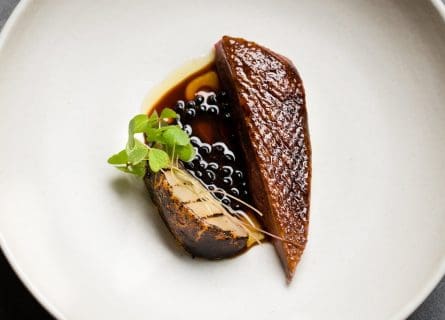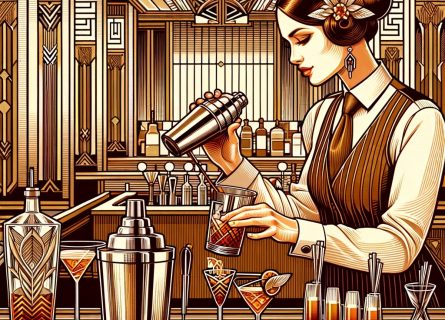Galway Travel Guide
Galway: Heart of Connemara - Where Culture, History, and Irish Charm Converge by the Corrib
Welcome to the capital of Connemara, in the West of Ireland – a lively and prosperous trading port and University town that should be first on anybody’s itinerary when taking a trip through this stunningly beautiful part of Ireland. The city stands on the banks of the Corrib River, or Gaillimh in Gaelic, from which it takes its name. Its historical fame and importance are derived from the port and the Spanish Arch, where ships from Spain unloaded their cargo after voyages across the Americas. Today, the city is more famous for its cultural life; the narrow lanes of Galway’s “Latin Quarter” are packed with shops, pubs, restaurants, and historic sites that throng with visitors in the summer. Its close-knit Gaelic-speaking community has gotten used to the annual summer invasion and welcomes visitors with a knowing smile and wit for which Ireland is famed.
Galway’s recorded history begins in 1124 AD when the Irish Monarch King of Connacht founded a Fort, Dún Bhun na Gaillimhe (‘Fort at the Mouth of the Gaillimh’). The medieval settlement grew despite the constant attacks by rival Irish Clans and coastal bombardments from the Vikings and Nordic warriors from Scandinavia. Connach held onto his territory until the Norman invasion and subsequent conquest of Ireland; in 1232, a Norman Baron named Richard de Burgh took control from Connach and claimed the settlement as his own. He fortified the town with walls in 1270 and began the English rule over Western Ireland.
Prehistoric Foundations and Trade Development
However, archaeological evidence suggests that the first inhabitants of Galway were hunter-gatherers of the Middle Stone Age. Later, Neolithic settlers began clearing the surrounding forests near Galway to create the region’s first farms. The settlement thrived in the Bronze and Iron Ages, as recovered artifacts testify. Early written accounts suggest that Galway prospered as a fishing village and a trading post at the mouth of the Corrib, where merchants would come to exchange goods. This was a thriving community here before the King of Connacht arrived!
The decades following De Burgh’s capture of Galway were relatively peaceful. The population grew to about 3000, and trade increased with neighboring European ports. In 1396, Galway was granted a charter and made a royal borough by the Crown in 1484. For centuries, the town was ruled and presided over by 14 families known as the tribes of Galway. The mayor and the leading citizens usually came from these 14 families. The families ruled over the town in almost complete isolation from the rest of Ireland. Nonetheless, Galways thrived on international trade with Spain and France. It was the main source of trade to the Western Iles and Scotland; Christopher Columbus paid a visit in 1477, stopping off on a trip to Iceland.
16th Century Challenges and Growth
During this period of prosperity in the Middle Ages, several important religious buildings and monuments were constructed, including The Church of St Nicholas. The town also suffered some damage when two severe fires ravaged Galway in 1473 and 1500. Fires were commonplace in these times, as most buildings were made of wood. Unfettered by the natural hazards and problems the citizens faced, they continued to build a prosperous town in the 16th century. In 1545, the Crown gave its proud inhabitants new charters that extended Galway’s jurisdiction to the Aran Islands. Yet more powers were granted in 1579, as the ruling English Monarchs saw Galway’s great value and strategic importance to their Kingdom. The first hospital, St Bridget’s Hospital, was built in 1543, and not a day too soon afterward, an outbreak of diseases known as sweating sickness engulfed the city. The population slowly recovered, and the town grew as Galway’s wealth and renown spread across Europe.
More powers would be conferred upon the town in the early 17th century; in 1610, the English King James I gave Galway another charter; the city and surrounding lands were declared a county in their own right. The good times sadly were not to last; however, after centuries of prosperity, the twin effects of a terrible plague in 1649 and the Irish Confederate Wars would take their toll on the city. After the Irish Catholic rebellion of 1641, Galway’s citizens aligned themselves with the Catholic rebels and drove out the English garrison in 1642. Their victory and control over the city endured until 1652, when English Parliamentarian forces under the leadership of Oliver Cromwell captured Galway and executed the rebel leaders. This period of stability was short-lived; in 1689, the citizens of Galway supported the Jacobite forces campaigning for the restoration of the Catholic King James II following his dispossession by the English Parliament. The Jacobean army was annihilated at the battle of Aughrim in 1691, and Galway was sidelined by the English protestant rules for many years after.
The wars of the 17th century left a deep scar on the city of Galway, adding to its woes as a Catholic Port city. It was treated with great suspicion by the English Authorities. In 1708 and again in 1715, all Catholics were ordered to leave the city after fears of a French invasion of Ireland following a Jacobite Rising in Scotland. The constant persecution of the Catholic population, many of which controlled the city’s merchant trade, caused a period of rapid decline in commercial activity in Galway. The city also had to contend with a tsunami in 1755 after the Lisbon earthquake, which caused severe damage to the port Spanish Arch.
The 19th century saw some economic recovery as the Penal Laws designed to discriminate against Roman Catholics were relaxed. This stability was sadly short-lived as the population of Galway fell dramatically during the potato famine of 1845-49. Many inhabitants fled to America for a better life during these difficult times—those who stayed faced extreme poverty, hardship, and squalor. Nonetheless, there were also some positive developments in Galway. The great University of Queen College Galway was opened in 1849, and the city was connected to the national railway line in 1850.
Transformation and Prosperity
Ireland experienced great turmoil and social upheaval in the 20th century; Galway would play a small but significant role in the Irish War of Independence. The city was the British Army’s western headquarters, which meant resistance from its inhabitants was futile. Irish Republican Army’s supporters at the University, however, did attack the British Garrison on more than one occasion. After a local Catholic priest, Fr. Michael Griffin, was shot by British forces in November 1920, the city’s business community launched a boycott against Northern Irish goods. Galway would play a minor role during World War I, although the nation got a taste of the horrors of World War I when The Lusitania passenger ship was sunk off the Irish coast in 1915. This atrocity spurned more young men from all over Ireland to become involved in the war effort, and many young men would never return home.
After the Irish War of Independence and the Irish declaration of an Independent State in 1922, Galway could finally proudly claim to be part of a united Ireland. A period of stability followed until the onset of the Second World War when many Irish troops lost their lives in Europe. Following the end of the war in the 1950s, during the 20th century, Galway revived. By the 1950s, it was well on the road to recovery with growing industries, including iron, milling, and furniture making. In the subsequent decades, these were replaced by engineering, IT, and electronics industries. It became renowned as one of Ireland’s shopping centers; the Eyre Center opened in 1991.
Galway has benefited dramatically from the so-called ‘Celtic Tiger’ era in the 1990s; as Ireland enjoyed rapid economic growth and prosperity, the city’s tourist attractions multiplied. Still, the inhabitants often remind us that this proud university town is not dedicated to nor exists solely for tourism, although a wealth of attractions await the visitor. Galway has plenty of historic sites and all the restaurants, bars, and cultural life you would expect, but that’s not its biggest draw. Visitors come in vast numbers to appreciate one of Europe’s most unspoiled and wildest parts. Galway dazzles us with its dramatic mountains and dramatic Atlantic Coastline – welcome to one of the most unspoiled parts of the world!
-

Michelin-starred Dining at Aniar in Galway Gastronomy & Wine
Visitors to Galway can expect abundant superb seafood options, benefiting from the city’s large Atlantic fishing port. Artisan beers are becoming more popular as traditional stout, and young Irish professionals are increasingly embracing wine. A good selection of international wines can be found in Galway’s bars and restaurants. Sheridan’s cheesemongers have a terrific little wine bar. The lively pubs are attractive, packed with students, young and older couples, all ages mixing well together.
The Latin Quarter
The center of Galway’s food scene has traditionally been in the historic district named the “Latin Quarter,” particularly around Quay Street. These medieval narrow lanes have various restaurants to suit every taste and budget. Local chefs make full use of the plentiful seafood; highlights include Oysters and Lobsters from the catch of the day. The city hosts the annual International Galway Oyster Festival in September of each year, well worth attending. With so many good restaurants, making a selection for the evening can be difficult, but try Aniar for a real treat!
Highlights
-
Spanish Arch
The most famous monument to the city’s past, the Arch, was constructed in the 16th century and added to the town walls as a bastion to protect merchant ships from looting. It subsequently became known as the Spanish Arch as a result of its role in the lucrative trade with Spain, whose ships often docked in Galway. Today, part of the Arch forms the Galway city museum, offering a fascinating journey through the city’s turbulent and sometimes violent history.
-
St Nicholas Church
This is the largest medieval church in Ireland, built in 1320 upon the ruins of an older structure. It has been used for centuries as a place of worship by the inhabitants of Galway, it is even rumored that Christopher Columbus prayed here in 1477 before sailing away on one of his attempts to reach the New World. Visitors are welcome to take a tour through the Church allowing you to glimpse its long and fascinating history.
-
Connemara National Park
A must for any visitors to Galway, the Connemara National Park is very close to the city and contains some spectacular scenery, dominated by the mountains known as the Twelve Bens. Here visitors have a chance to spot red deer and the famous Connemara Ponies.
-
Kylemore Abbey
Situated inside the Connemara National park, this 19th century Abbey set on the shores of Kylemore Lough is captivating. The great building has a romantic and fantastical air; it became an abbey when Benedictine nuns, fleeing from Belgium during World War I, sought refuge here. The building is now a girl’s boarding school and its gardens, restaurant and lakeside setting make it a popular tourist destination.
Recommended for you
More information
If you would like us to customize an exclusive luxury tour, contact us and let us know your travel plans. We offer luxury food and wine tours for private groups of a minimum two guests. In addition, all of our private, chauffeured tours are available year-round upon request.







